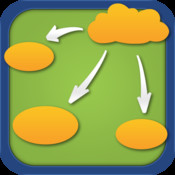An excellent blog post from the SimpleK12 blog, Assistive Technology:15 Ideas for the Classroom from Lisa (And Yes, they really do wear blue bunny slippers at conferences )
 |
| From the website |
We'll post on each of the 15 Ideas to
give you some ideas, resources and options you can use to implement
the Technology at either no cost (free) or low cost. For each of the
AT Ideas mentioned in the article, there are commercial and sometimes
very expensive solutions. An Alternative Augmentative Communication
(AAC) device can run many thousands of dollars and may be the best
solution. But as a stopgap or fill-in there there are other ways to
reach the same goal – student involvement and learning.
There are lots of programs available
which for one reason or another, the developer has chosen to make
available at no cost and even provides the program code to allow
others to extend the features and improve the program.
Sometimes the simplest solution is the
best (Occam's
Razor)
So stand by to look at some new
programs with exciting features AND looking at features in old
programs you might have missed.




